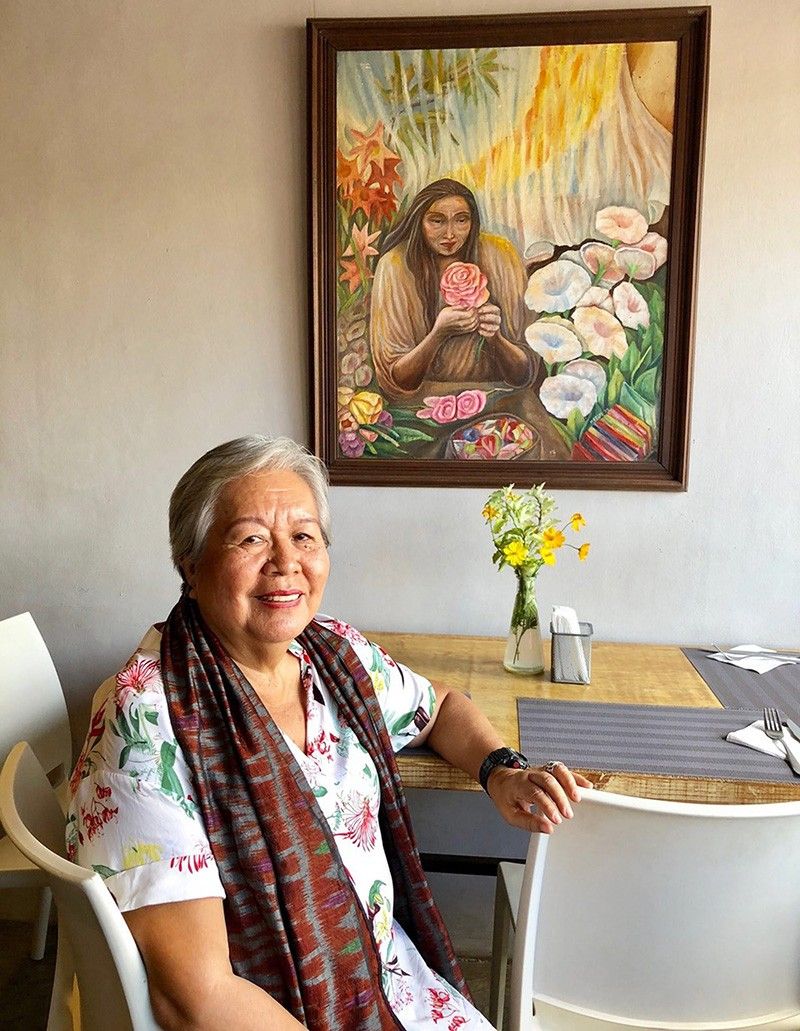Tacloban’s worthier wonders

One of the pleasures of our recent visit to Tacloban was meeting up with two friends — the cultural scholar and UP Tacloban Humanities Division head Joycie Dorado Alegre, and the poet and Professor Emeritus Merlie M. Alunan. Beng and I made sure to spend an extra day in Leyte to see the UP Health Sciences campus in Palo, the fabulous Palo Cathedral, and other landmarks close to Tacloban. We’d already visited the Sto. Niño (i.e., the Marcos) Shrine and the next-door Public Library — both of them in a rather sorry state, as I reported last week. But going around town with longtime locals like Joycie and Merlie revealed worthier wonders.
We made sure to visit other tourist staples such as the Macarthur Landing Memorial Park in Palo — an impressive work by the late sculptor Anastacio Caedo, better known for his plaster busts of a pensive Jose Rizal, one of which I keep in my home office as a kind of conscience. (Though no blushing fan of the famously vainglorious general, I’d been intrigued enough by MacArthur’s Philippine connections to visit his museum and tomb in Norfolk, Virginia.) I tried hard to recreate the tableau of ships massing on Leyte Gulf, only to have my musings spoiled by a tourist and his girlfriend wading into the pool in mock fatigues and rubber boots, posing with fake firearms.
But this was tragedy on a diminutive note compared to what no one visiting Tacloban can escape — the howling hell that was supertyphoon Yolanda and the many thousands of deaths it left in its wake. As we passed one traffic island after another — with the grass almost strangely manicured and impeccably garbage-free — Joycie or Merlie would tell us, “Those islands became mass graves. There are people buried there.”
A more formal and movingly expressive memorial to the lost lay farther on in Tanauan, in artist Kublai Millan’s sculpture built on yet another mass grave. Everywhere we drove on that coastal plain, the surging sea had swept people and whole families away, and while the city seemed to have regained its equanimity and was bravely soldiering on five years after, there was a hole in its heart still aching to be filled.
Merlie herself had gone through a recent personal tragedy, with the sudden passing of her beloved son Ebeb. Even as Yolanda had spared her, living as she did on higher ground, she couldn’t have foreseen this dark turn down the road. (She had lost her father and five other family members in the Ormoc City flood of 1991.) She was still clearly grieving, but had gone out of her way to entertain us, and perhaps thereby also entertain herself.
Nothing can ever compensate for the loss of family, but Merlie was threading a way forward, in that way uniquely accessible to artists. Every true work of art is an affirmation of life, and in Merlie’s case, she has art aplenty to affirm life with. To begin with, there’s nothing literally closer to life than food, and for almost two decades now, Merlie and her enterprising children have built up one of Tacloban’s best-loved restaurant chains, headlined by the now-iconic Ayo Café along Ninoy Aquino Avenue.
Ayo (the name derives from the Visayan term for “good”) serves food as familiar as Spanish sardines, lumpia, roast chicken, and burgers at prices that won’t make you weep, but with a twist — the twist being that it’s cooked and presented just scrumptiously right, with the choicest ingredients, in servings large enough for take-home leftovers. I’d heard about Ayo before from friends who’d been there (Merlie proudly keeps a guest book signed by writers and artists), and while I may have initially accepted her invitation out of friendship, I’ll be seeking it out on my own on my next Tacloban sortie (and I insisted on paying for our merienda to emphasize my patronage).
The Ayo interlude also allowed us to discover another of Merlie’s less-known talents as a visual artist who paints and also does plant sculptures. I asked her to pose for a picture beside one of her works, and learned that this was something she had been doing since her years in Dumaguete, perhaps again as a refuge or respite of sorts from the travails of daily life.
Of course it’s her poetry that Merlie Alunan is best appreciated for (one of her poems, “Young Man in a Jeepney,” has been a perennial on my syllabus), and her sixth poetry collection, Running with Ghosts (Ateneo de Naga University Press, 2017) is understandably heavy with waterborne death. But as she points out at the close of her title poem, life will go on, in all its bewildering indifference:
“Grass sow their seeds over the turned earth, / The graves are greening in the seasonal rain. / Everyday we run with ghosts by our side. / God is silent. as ever blameless and inscrutable.”
* * *
Email me at jose@dalisay.ph and visit my blog at www.penmanila.ph.



















